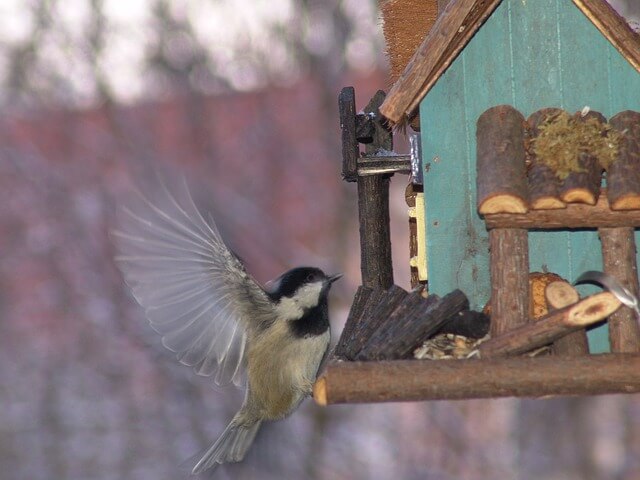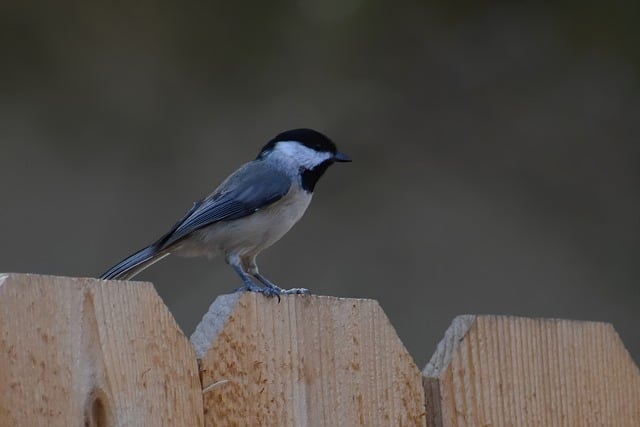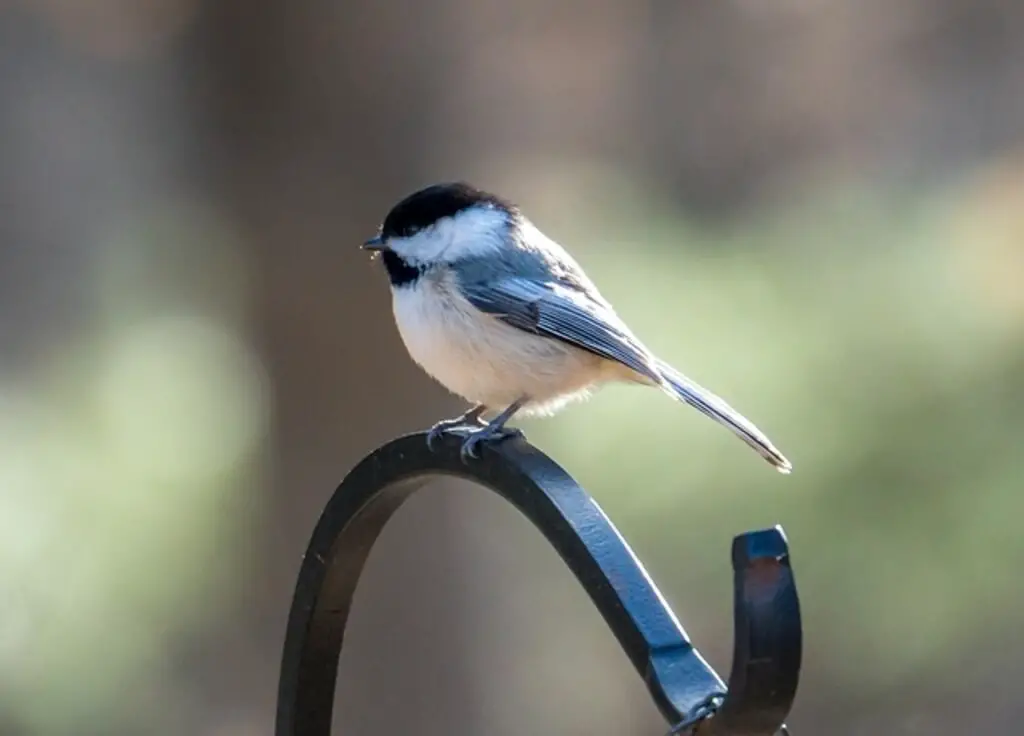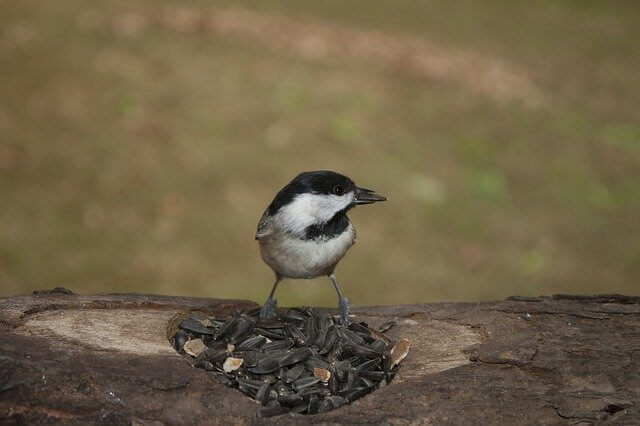If you’re a bird enthusiast looking to attract Carolina Chickadees to your backyard, you’re in the right place. These charming birds are known for their distinctive songs and acrobatic feats, and they can bring a sense of joy and liveliness to your outdoor space.
Attracting Carolina Chickadees to your backyard takes some effort and understanding of their preferences and needs. This guide will provide you with all the information you need to create a bird-friendly environment that appeals to these birds, including their natural habitat, dietary preferences, nesting habits, and more.
Table of Contents
- 1 Key Takeaways
- 2 How to Attract Carolina Chickadees?
- 3 Understanding Carolina Chickadees: Habitat and Diet
- 4 Creating a Bird-Friendly Garden
- 5 Bird Feeding Tips for Carolina Chickadees
- 6 Providing Nesting Opportunities
- 7 The Importance of Water Sources
- 8 Native Plants for Carolina Chickadees
- 9 Seasonal Considerations
- 10 Predators and Threats to Carolina Chickadees
- 11 Observing and Enjoying Carolina Chickadees
- 12 Engaging with Citizen Science Projects
- 13 Conclusion
- 14 FAQs: How to Attract Carolina Chickadees?
- 14.1 What type of habitat do Carolina Chickadees prefer?
- 14.2 What do Carolina Chickadees eat?
- 14.3 How can I create a bird-friendly garden to attract Carolina Chickadees?
- 14.4 What are some bird feeding tips to attract Carolina Chickadees to my backyard?
- 14.5 How can I provide nesting opportunities for Carolina Chickadees?
- 14.6 What is the importance of water sources in attracting Carolina Chickadees?
- 14.7 Are there any specific native plants that attract Carolina Chickadees?
- 14.8 How can I support Carolina Chickadees throughout different seasons?
- 14.9 What are the common predators and threats to Carolina Chickadees?
- 14.10 How can I observe and enjoy Carolina Chickadees in my backyard?
- 14.11 Are there any citizen science projects related to Carolina Chickadees?
- 15 Author
Key Takeaways
- Learn about Carolina Chickadees’ natural habitat and dietary preferences to mimic them in your backyard
- Create a bird-friendly garden by planting native plants, providing water sources, and avoiding harmful chemicals
- Choose the right bird feeders and birdseed to maximize attraction
- Provide suitable nesting opportunities, such as birdhouses, to support breeding and nesting
- Consider potential predators and threats to Carolina Chickadees and take measures to mitigate them
How to Attract Carolina Chickadees?
To attract Carolina Chickadees, you can provide a variety of food sources, such as sunflower seeds, peanuts, and suet, in bird feeders or on a platform feeder. You can also offer a fresh water source, such as a bird bath or a dripper.
Chickadees prefer natural cavities for nesting, so you can provide a nesting box with a 1 1/8 inch diameter entrance hole. Planting native trees and shrubs can also attract Carolina Chickadees, as they prefer to forage for insects and spiders in these plants.
Lastly, avoiding the use of pesticides can help create a safe environment for these birds. With these tips, you can create a welcoming habitat for Carolina Chickadees in your yard.
Understanding Carolina Chickadees: Habitat and Diet
Carolina Chickadees are small, charming birds that are native to the southeastern United States. They are found in a variety of habitats, including deciduous forests, mixed woodlands, and suburban areas.
These birds have a distinctive black cap and bib, white cheeks, and gray wings and back. They have a short, stubby bill and are usually seen flitting through trees and bushes in search of food.
Carolina Chickadees Habitat
Carolina Chickadees prefer wooded areas with plenty of trees and shrubs for nesting and foraging. They tend to avoid open spaces and areas with little tree cover.
These birds can be found in a variety of habitats, including deciduous forests, mixed woodlands, and suburban areas. They are particularly attracted to areas with a mix of deciduous and coniferous trees, as well as forests with a dense understory of shrubs and bushes.
If you want to attract Carolina Chickadees to your backyard, you should try to recreate their natural habitat as much as possible. Plant a variety of trees and shrubs that provide food and shelter for these birds, and avoid using pesticides and chemicals that can harm their habitat.
Carolina Chickadees Diet
Carolina Chickadees are primarily insectivores, but they also eat seeds and fruits. Their diet consists mainly of caterpillars, spiders, beetles, and other insects that they find on leaves and bark.
In the autumn and winter, Carolina Chickadees rely more heavily on seeds and fruits as their primary food source. They particularly enjoy sunflower seeds, safflower seeds, and suet.
If you want to attract Carolina Chickadees to your backyard, you should provide a variety of foods that meet their dietary needs. Offer a mix of seeds, nuts, and suet in feeders, and plant trees and shrubs that produce fruits and berries that are attractive to these birds.
Creating a Bird-Friendly Garden
If you want to attract Carolina Chickadees to your backyard, creating a bird-friendly garden is essential. By mimicking their natural habitat, you can make your outdoor space an attractive and welcoming environment for these charming birds.
Here are some tips to help you create a bird-friendly garden:
Plant native plants
Native plants provide a source of food and shelter that Carolina Chickadees are familiar with. When choosing plants, opt for those that are native to your region or state. Some examples include oak trees, flowering dogwoods, and blueberries.
Provide water sources
Water is crucial for the survival of birds, especially during the hot and dry summer months. Consider installing a birdbath or a dripping water source to attract Carolina Chickadees. Change the water frequently to prevent the growth of algae and bacteria, and place the source in a shaded area to keep the water cool.
Create shelter
Carolina Chickadees need a place to hide from predators and extreme weather conditions. You can create shelter by planting shrubs, installing birdhouses, or leaving dead trees standing. Avoid using harmful chemicals, such as pesticides, which can harm the birds or their food sources.
Avoid exotic plants
Exotic plants might look pretty, but they can disrupt the local ecosystem and harm native species. Avoid planting non-native plants, especially invasive species that can take over and ruin the natural balance of your garden.
- Stick to native plants that thrive in your area.
- Use organic and natural fertilizers whenever possible.
- Reduce your lawn size and replace it with bird-friendly plantings.
By following these tips, you can create a beautiful and inviting space that will attract Carolina Chickadees and other bird species to your backyard. Enjoy the company of these fascinating birds and take pride in contributing to their survival and conservation.

Bird Feeding Tips for Carolina Chickadees
If you want to attract Carolina Chickadees to your backyard, providing bird feeders is one of the most effective ways to do so. Here are some bird feeding tips to help you attract these charming birds:
- Choose the right feeder: Carolina Chickadees prefer tube feeders or hopper feeders with small perches.
- Provide the right type of birdseed: Carolina Chickadees love black oil sunflower seeds, suet, and peanuts.
- Keep your feeders clean and dry: Dirty or wet feeders can cause diseases that can harm birds.
- Place your feeders strategically: It is best to place your feeders near trees or shrubs where Carolina Chickadees can perch and hide from predators.
- Offer food at the right time: Carolina Chickadees are most active in the morning and late afternoon, so make sure to provide food during those times.
By following these bird feeding tips, you can increase the likelihood of attracting Carolina Chickadees to your backyard and enjoy their playful and curious personalities.
Providing Nesting Opportunities
Carolina Chickadees are cavity-nesting birds that prefer to nest in natural tree cavities. However, they readily accept man-made birdhouses that meet their specific needs. Providing a suitable nesting habitat in your backyard can help attract these birds and provide them with a safe place to raise their young.
Carolina Chickadees Nesting Habits
Carolina Chickadees typically breed from late April to early July, with females laying four to seven eggs per clutch. The male and female take turns incubating the eggs, which hatch after about two weeks. The young birds leave the nest after about three weeks, but they stay near the parents and continue to be fed for several more weeks.
To attract Carolina Chickadees to your birdhouses, it is important to ensure that they are placed in suitable locations and meet specific design specifications.
Birdhouse for Carolina Chickadees
The ideal birdhouse for Carolina Chickadees has an entrance hole diameter of 1-1/8 inches, a floor size of 4 inches by 4 inches, and a height of 8-10 inches. The house should have a hinged or removable roof for easy cleaning and monitoring. The entrance hole should be no more than 6-8 inches above the floor, and the house should be securely attached to a tree or pole, about 6-12 feet off the ground.
Carolina Chickadees prefer wooded areas with a mix of deciduous and coniferous trees. Therefore, placing the birdhouse near these trees increases the chance of attracting these birds. Avoid placing birdhouses in direct sunlight, as they can become too hot for the young birds.
It is important to clean out birdhouses after each nesting season to prevent the buildup of parasites and diseases. Carolina Chickadees may use the same birdhouse for multiple nesting seasons, so providing suitable nesting opportunities can secure their continued presence in your backyard.
The Importance of Water Sources
Providing water sources is crucial when trying to attract Carolina Chickadees to your backyard. These birds require clean and fresh water for drinking and bathing, and having a reliable water source can make your garden more appealing to them.
A birdbath is a simple and effective way to provide water for Carolina Chickadees. It should be shallow with a gradual slope to allow the birds to enter and exit easily. You can also add a dripper or a mister to create a gentle flow of water to attract them further.
It’s important to keep the water clean and fresh to prevent the spread of diseases. A weekly cleaning with a 10% bleach solution will help keep the water safe for the birds.
In addition to birdbaths, you can also consider adding a small pond or a water feature that provides a constant supply of running water. Be sure to choose a water source that suits your backyard and the Carolina Chickadees’ needs.
Native Plants for Carolina Chickadees
If you want to attract Carolina Chickadees to your backyard, planting native plants is one of the best things you can do. These birds are naturally adapted to the plant species found in their area, so by planting native plants, you’re providing a habitat that feels familiar and comfortable to them. Additionally, native plants are more likely to attract the insects that Carolina Chickadees need to feed on.
Here are some native plants that are particularly appealing to Carolina Chickadees:
| Plant Name | Characteristics |
|---|---|
| Eastern Red Cedar (Juniperus virginiana) | Evergreen tree with blue-gray berries that attract insects |
| American Holly (Ilex opaca) | Evergreen tree with red berries that attract insects |
| Pine (Pinus spp.) | Evergreen tree with seeds that attract insects |
| Cherry (Prunus spp.) | Deciduous tree with small fruit that attract insects |
| Oak (Quercus spp.) | Deciduous tree with acorns that attract insects |
| Sumac (Rhus spp.) | Shrub with red berries that attract insects |
| Serviceberry (Amelanchier spp.) | Deciduous tree with small fruit that attract insects |
When selecting plants for your Carolina Chickadee-friendly garden, try to choose a mix of trees, shrubs, and flowering plants that provide a variety of food sources throughout the year. Providing a range of heights and canopy densities will also create a diverse habitat that will attract a wider range of bird species in addition to Carolina Chickadees.
Seasonal Considerations
Attracting Carolina Chickadees to your backyard requires taking into account the different needs and preferences of these birds throughout the year. With seasonal considerations, you can support them year-round. Here are some tips:
Winter Feeding
During the winter, Carolina Chickadees rely on bird feeders as natural food sources become scarce. Make sure to fill your feeders regularly with high-energy foods such as suet, peanuts, and black oil sunflower seeds. Place your feeders in sheltered areas and clean them frequently to prevent the spread of diseases.
Nesting in Spring
In the spring, Carolina Chickadees start building their nests. Provide suitable nesting opportunities by placing birdhouses in your garden. The ideal placement for birdhouses is a secluded, shaded area, about 6-15 feet off the ground. Make sure the entrance hole is the right size for Carolina Chickadees, typically 1 1/8 inches in diameter. Check the birdhouses regularly to make sure they are clean and do not contain any predators.
Summer Requirements
In the summer, Carolina Chickadees are still searching for high-energy foods. Keep feeding them with protein-rich insects, mealworms, and fruit. Water sources become even more important during the hot summer months. Install a birdbath or a dripping water source to provide clean, fresh water. Make sure to keep it full, and change the water frequently to avoid standing water, which can attract mosquitoes.
Fall Preparations
In the fall, Carolina Chickadees, like many birds, start to prepare for migration. To help them, keep your feeders filled with high-energy foods, such as sunflower seeds, to fuel up for their journey. To ensure that your garden can provide shelter, consider planting evergreen trees and shrubs that can offer refuge from the cold winds.
Predators and Threats to Carolina Chickadees
Despite their small size and charming personalities, Carolina Chickadees face several threats in their natural environment. It is important to be aware of these risks when attracting them to your backyard and take necessary precautions to keep them safe.
Predators are one of the biggest threats to Carolina Chickadees. Domestic cats are a significant danger to these birds, as they prey on them when they venture too close to the ground. Other predators can include larger birds, such as hawks and owls, and mammals, such as raccoons and squirrels.
Pesticides and other toxic chemicals can also pose a risk to Carolina Chickadees. Insecticides, herbicides, and rodenticides can harm or even kill these birds, as they ingest contaminated food or come into contact with poisoned insects.
Habitat loss and fragmentation are also significant threats to Carolina Chickadees. Urban development, deforestation, and climate change can all impact the birds’ natural habitat and food sources, making it challenging for them to survive and thrive.
To mitigate these risks, it is important to keep cats indoors or invest in bird-safe outdoor enclosures. Avoid using pesticides or other chemicals in your garden, and create a bird-friendly environment that mimics the birds’ natural habitat. Plant native vegetation, provide shelter, and avoid excessive pruning or clearing of natural areas.
Observing and Enjoying Carolina Chickadees
Carolina Chickadees are delightful birds to observe, and their presence in your backyard can offer endless enjoyment. Here are some tips on how to best observe and enjoy Carolina Chickadees:
- Be patient and still: Chickadees can be skittish and easily scared away, so patience and stillness are key to observing them in their natural environment.
- Use binoculars: Binoculars are a great tool to get a closer look at these birds and their unique behaviors.
- Provide a comfortable viewing spot: Set up a bird observation area in a quiet and comfortable place in your backyard, equipped with a chair or bench to sit and watch.
- Use bird feeders and water sources: Providing bird feeders and water sources in your backyard will attract Carolina Chickadees and give you more opportunities to observe their behaviors.
- Practice ethical birdwatching: Be respectful of the birds’ natural habitat and behaviors, avoiding disruptive actions such as playing recordings of bird calls or getting too close to their nests.
By following these tips, you can appreciate the beauty and joy that Carolina Chickadees bring to your backyard.
Engaging with Citizen Science Projects
Bird enthusiasts can contribute to research and conservation efforts by participating in citizen science projects related to Carolina Chickadees. These projects allow individuals to collect data on birds and share their findings with scientist to gain insights on the birds’ behavior, population trends, and habitat requirements.
One such project is the Carolina Chickadee Project, a citizen science initiative that allows participants to record sightings and report breeding activity of Carolina Chickadees. The project aims to gather information on the birds’ range, habitat, and breeding patterns to better understand how to conserve their populations.
Another project to consider is the Great Backyard Bird Count, an event that takes place over four days in February each year. Participants record and report the number and species of birds they see in their backyard, providing valuable data on bird populations across the country.
By engaging in citizen science projects, bird lovers can play an active role in understanding and preserving the environment that Carolina Chickadees depend on for survival. It’s a rewarding way to learn more about these fascinating birds and contribute to their conservation.
Conclusion
Creating a suitable environment to attract Carolina Chickadees is essential for any bird enthusiast. By understanding their natural habitat, dietary habits, and nesting preferences, you can create a bird-friendly garden that will attract these charming birds.
Planting native plants, providing water sources, and avoiding harmful chemicals are just a few strategies for creating an ideal environment. Maintaining bird feeders, providing suitable nesting opportunities, and observing seasonal considerations are important for maintaining their presence throughout the year.
While creating bird-friendly environments, it is also crucial to consider potential predators and threats to their well-being. Cats, pesticides, and habitat destruction are common threats that can be mitigated by taking necessary precautions.
Observing and enjoying Carolina Chickadees in your backyard is a rewarding experience. It can also serve as an opportunity to contribute to scientific research and conservation efforts through citizen science projects.
Take Action
Start by incorporating some of the tips and strategies discussed in this article to attract Carolina Chickadees to your backyard. Remember, creating a suitable environment requires patience and consistent effort. With the right approach, you can enjoy the beauty and benefits these birds bring to your garden.

FAQs: How to Attract Carolina Chickadees?
What type of habitat do Carolina Chickadees prefer?
Carolina Chickadees prefer habitats with a mix of trees and shrubs, especially those with oak, pine, and hickory trees. They are commonly found in wooded areas, forests, and suburban neighborhoods.
What do Carolina Chickadees eat?
Carolina Chickadees have a diverse diet that includes insects, spiders, seeds, berries, and nuts. They are known to visit bird feeders for suet, sunflower seeds, and other types of birdseed.
How can I create a bird-friendly garden to attract Carolina Chickadees?
To create a bird-friendly garden, you can plant native plants, provide water sources such as birdbaths, create shelter with shrubs and trees, and avoid using harmful chemicals. These elements will help attract Carolina Chickadees and other bird species.
What are some bird feeding tips to attract Carolina Chickadees to my backyard?
To attract Carolina Chickadees, you can choose feeders with perches and small openings, offer a variety of birdseed including sunflower seeds and suet, and maintain a consistent feeding schedule. Providing fresh water alongside the feeders is also beneficial.
How can I provide nesting opportunities for Carolina Chickadees?
Carolina Chickadees typically nest in tree cavities or birdhouses. To provide nesting opportunities, you can install birdhouses with specific dimensions and placement requirements tailored for Carolina Chickadees. Adding wood chips or sawdust to the birdhouses can mimic their natural nesting materials.
What is the importance of water sources in attracting Carolina Chickadees?
Water sources such as birdbaths or dripping water features are crucial for attracting Carolina Chickadees. They need water for drinking and bathing, and having a clean and accessible water source in your garden will make it more attractive to these birds.
Are there any specific native plants that attract Carolina Chickadees?
Yes, there are several native plants that Carolina Chickadees find appealing. Some examples include black cherry, American holly, eastern red cedar, American beech, and various oak species. Planting a diversity of native plants will provide both food and shelter for these birds.
How can I support Carolina Chickadees throughout different seasons?
To support Carolina Chickadees throughout different seasons, you can provide winter food sources such as suet and high-energy birdseed. During spring nesting season, ensure there are suitable nesting opportunities available. In extreme weather conditions, consider providing shelter options like roosting boxes or dense shrubs.
What are the common predators and threats to Carolina Chickadees?
Common predators of Carolina Chickadees include cats, snakes, and larger bird species. Threats to their existence include habitat destruction, pesticide use, and climate change. Taking steps to reduce these risks, such as keeping cats indoors and avoiding harmful chemicals, can help protect these birds.
How can I observe and enjoy Carolina Chickadees in my backyard?
To observe and enjoy Carolina Chickadees, you can set up bird feeders and bird baths in a quiet and peaceful area of your garden. Using binoculars or a camera can enhance your experience. Creating a calm and welcoming environment will encourage these birds to stay and offer delightful moments of observation.
Yes, there are several citizen science projects that focus on bird research and conservation, including those that involve Carolina Chickadees. By participating in these projects, you can contribute valuable data and help scientists better understand and protect these birds.





